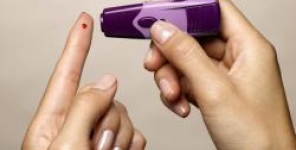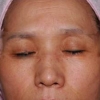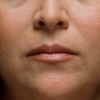Il fattore di crescita insulino-simile 1 sierico e l'invecchiamento del viso: gli alti livelli si associano con ridotte rughe della pelle, in uno studio cross-sezionale
 Il fattore di crescita insulino-simile (IGF)-1 è un fattore di crescita che può influenzare il funzionamento dei fibroblasti, con effetti tra cui l'inibizione delle collagenasi e l'induzione dell'espressione di collagene.
Il fattore di crescita insulino-simile (IGF)-1 è un fattore di crescita che può influenzare il funzionamento dei fibroblasti, con effetti tra cui l'inibizione delle collagenasi e l'induzione dell'espressione di collagene.
Obiettivi: Valutare se IGF-1 sierico, IGF-binding protein (IGFBP) 3 e il rapporto tra IGF-1 e IGFBP3, come misura della biodisponibilità di IGF-1, si associano con l'invecchiamento del viso e con le rughe della pelle.
Metodi: Da un campione casuale costituito da 617 soggetti del Leiden Longevity Study, è stata valutata l'età percepita e le rughe della pelle con delle fotografie del viso, mentre sono stati misurati IGF-1 e IGFBP3 nel siero. Le associazioni sono state valutate utilizzando dei modelli di regressione lineare, aggiustati per età cronologica, sesso, indice di massa corporea, abitudine al fumo e esposizione al sole.
Risultati: Tra i terzili del rapporto di IGF-1 su IGFBP3, e dopo aggiustamento per tutti i potenziali fattori confondenti, l'età media percepita è diminuita da 60.6 anni nel terzile più basso a 59.5 anni in quello più alto (Ptrend = 0.045 ). Allo stesso modo, il grado medio delle rughe della pelle è diminuito da 4.8 nel terzile più basso a 4.5 nel più alto ( Ptrend = 0.011). L'aggiunta delle rughe della pelle come covariata nell'analisi tra IGF-1 e l'età percepita ha diminuito questa associazione.
Conclusioni: Questo studio dimostra che un più alto rapporto di IGF-1 su IGFBP3 si associa con una più bassa età percepita attraverso la sua associazione con le ridotte rughe della pelle. Anche se gli elevati livelli di IGF-1 ritardano l'accumulo delle rughe, c'è ancora bisogno di indagare questo fenomeno.
Storia della pubblicazione:
Titolo: Serum insulin-like growth factor 1 and facial ageing: high levels associate with reduced skin wrinkling in a cross-sectional study
Rivista: British Journal of Dermatology. doi: 10.1111/bjd.12131
Autori: R. Noordam, D.A. Gunn, C.C. Tomlin, A.B. Maier, T. Griffiths, S.D. Catt, S. Ogden, P.E. Slagboom, R.G.J. Westendorp, C.E.M. Griffiths, D. van Heemst, A.J.M. de Craen, on behalf of the Leiden Longevity Study group
Affiliazioni: Department of Gerontology and Geriatrics, Leiden University Medical Center, Leiden, The Netherlands
Unilever Discover, Colworth, Sharnbrook, Bedfordshire, U.K.
Netherlands Consortium of Healthy Ageing (NCHA), Leiden, The Netherlands
Dermatology Centre, Salford Royal NHS Foundation Trust, University of Manchester, Manchester, U.K.
Section of Molecular Epidemiology, Department of Medical Statistics and Bioinformatics, Leiden University Medical Center, Leiden, The Netherlands
Abstract:
Background Insulin-like growth factor (IGF)-1 is a growth factor that can influence fibroblast functioning, with effects including the inhibition of collagenases and the induction of collagen expression.
Objectives To assess whether serum IGF-1, IGF-binding protein (IGFBP)3 and the ratio between IGF-1 and IGFBP3, as a measure of IGF-1 bioavailability, are associated with facial ageing and skin wrinkling.
Methods From a random sample comprising 617 subjects from the Leiden Longevity Study, perceived age and skin wrinkling were assessed from facial photographs, and IGF-1 and IGFBP3 were measured in serum. The associations were assessed using linear regression models, adjusted for chronological age, sex, body mass index, smoking and sun exposure.
Results Across tertiles of the ratio of IGF-1 to IGFBP3, and after adjusting for all potential confounding factors, the mean perceived age decreased from 60·6 years in the lowest tertile to 59·5 years in the highest (Ptrend = 0·045). Similarly, the mean skin wrinkling grade decreased from 4·8 in the lowest tertile to 4·5 in the highest (Ptrend = 0·011). Adding skin wrinkling as a covariate in the analysis between IGF-1 and perceived age diminished this association.
Conclusions This study demonstrates that a higher ratio of IGF-1 to IGFBP3 associates with a lower perceived age, via its association with reduced skin wrinkling. Whether high IGF-1 levels actually delay the accumulation of skin wrinkling now needs investigating.





